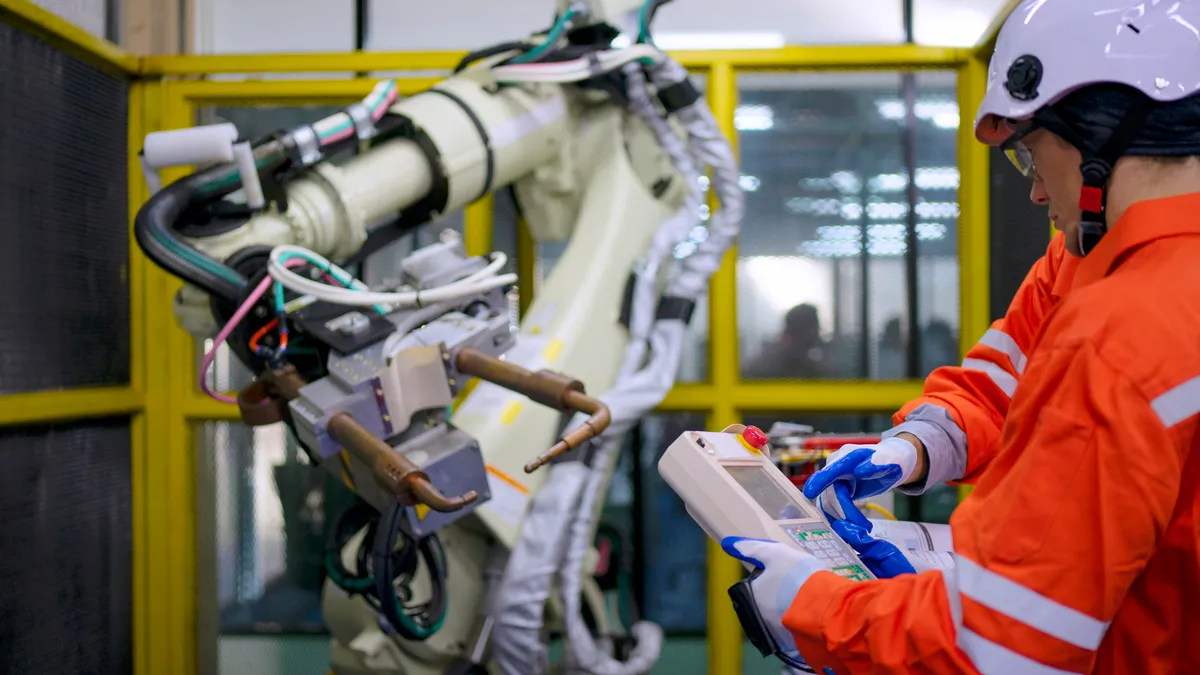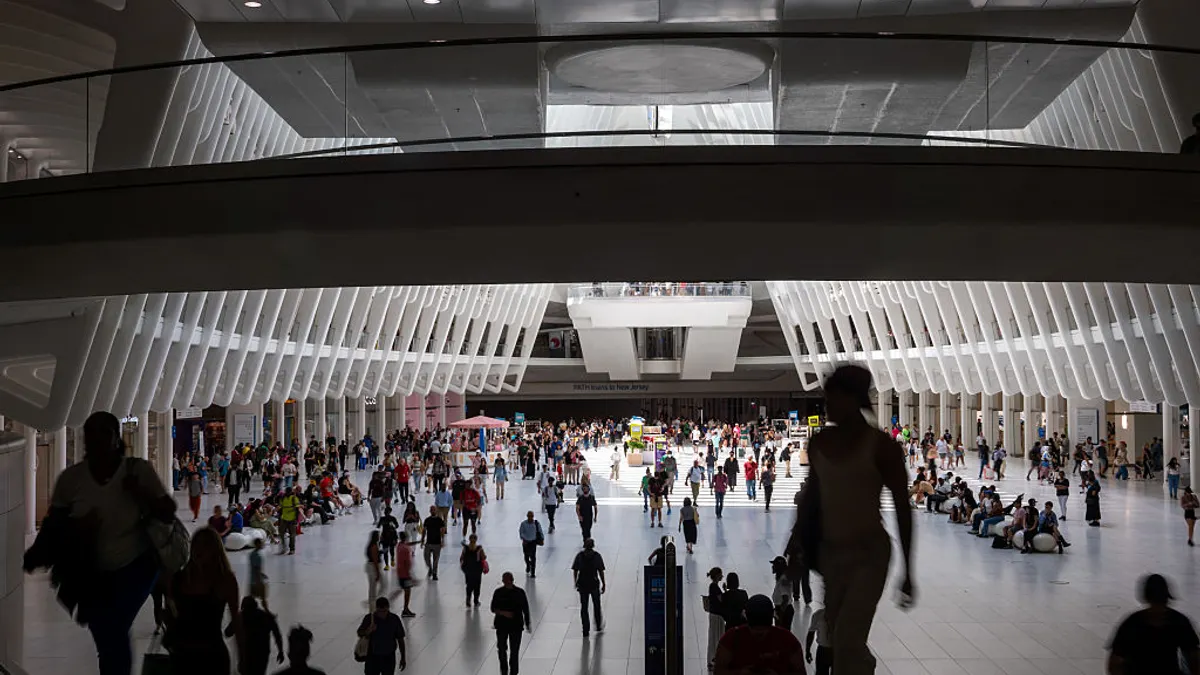As manufacturers look to adopt the latest artificial intelligence and automated technologies to drive efficiency on the shop floor and remain competitive, one of the biggest challenges is convincing their workers that the changes are a good idea.
Today’s U.S. workforce is more worried than hopeful about future AI use; about a third of those surveyed recently by the Pew Research Center say it will lead to fewer job opportunities in the long run.
Manufacturing leaders convened at the North American Manufacturing Excellence Summit in Fort Worth, Texas, last week to discuss their strategies around how to quell anxieties and job security concerns. This includes tactics such as as implementing technologies that expedite tedious tasks and processes, like picking up parts or distilling hundreds of pages of business documents.
In some cases, the technology has even opened up the possibility for factories to operate shifts without human supervision, allowing for a shorter work week.
Here are some examples of how manufacturers are incorporating AI, automation and robotics to not only boost productivity, but to improve company culture and help workers upskill for the future.
Automating dull tasks and Deere’s cranky robot
Heather Bishop, global director of manufacturing and operations at John Deere Power Systems, said during the manufacturing conference that the farm equipment maker is leveraging autonomous business technologies not to eliminate jobs, but to free up its workforce capacity for other types of tasks.
For example, Deere & Co. is using large language models to help its supplier quality engineers read through stacks of warranty claims at faster rates. Typically, they can spend up to 15 hours a week combing through claims, Bishop said, but with AI tools looking for key words and phrases that time has shrunk to two hours.
“What a way for us to then take the remaining 10-plus hours and say, ‘Here's some other problems we need to solve,’ or as we're experiencing attrition, just filling in that particular space and funding something else that leads to innovation,” Bishop said.
On the factory floor, Deere is looking for other improvements by encouraging its workers to experiment with automated technology — within reason. Bishop said she is cultivating a “gamification” culture and a safe space to experiment, try and fail, but without it leading to engine failures and other manufacturing costs.
Importantly, Bishop said she wants to make her workers excited about embracing AI tools and other advanced technologies, in part by making it fun.
At one factory, Deere’s employees were encouraged to name one of the engine robots as if it was a pet or family member. The team decided on “Cranky” not because of the robot’s disposition, Bishop said, but because “he picks up cranks and puts them on the line.”
It’s a minor thing to name a robot, but the act has the potential to warm employees to the idea of working with, rather than against autonomous technologies.
“We are going to struggle more with individuals not embracing the new technology and not bringing it in because of their fear, their concerns, their lack of excitement, their lack of us tying the value proposition to it,” she said. “The people’s readiness level is all associated with the cultures we create.”
‘Lights out’ manufacturing with Procter & Gamble
Consumer products giant Procter & Gamble is leveraging robotics and automation to shorten the manufacturing work week for its employees by running a four-hour unattended night shift at a Berlin, Germany, factory.
Rather than have five, eight-hour shifts, the company introduced a four-day work week with two 10-hour days to lower costs and create a better work-life balance for its employees, Amy Rardin, global senior director of supply chain digitization and external strategic partnerships, said at the Fort Worth conference last week.
P&G employees galvanized around the idea with a focus on reducing losses and touches on the factory equipment, according to a company presentation. The first unattended shift ran successfully on July 1, 2024.
“We’ve been running almost a year now at that site, and we have several other sites that are running with other opportunities as well,” Rardin said. P&G has been able to replicate similar programs at six to eight plants so far.
“It really is about thinking differently with a growth mindset about how to collectively come together and solve a problem that meets multiple audiences,” Rardin said.













